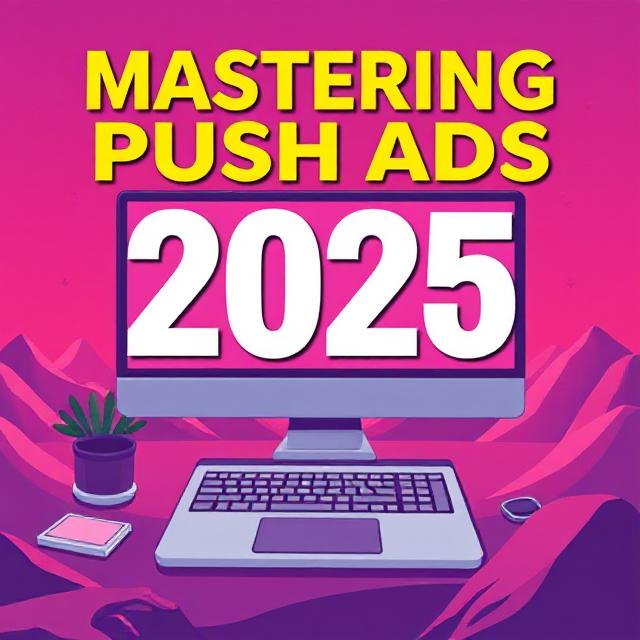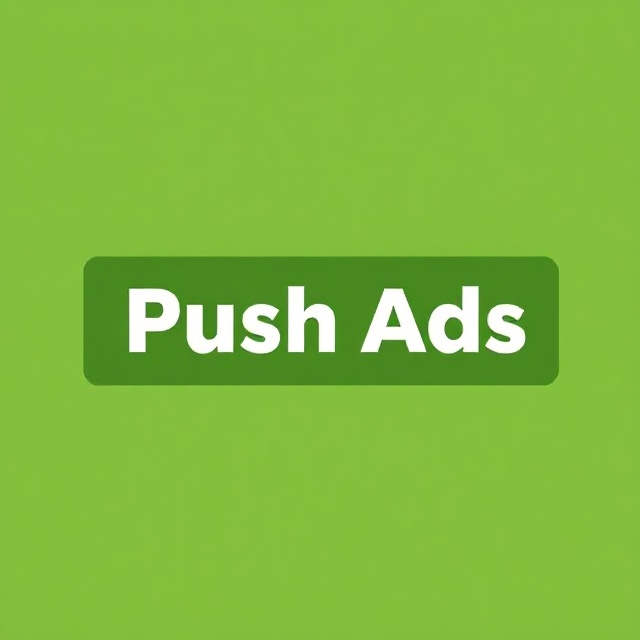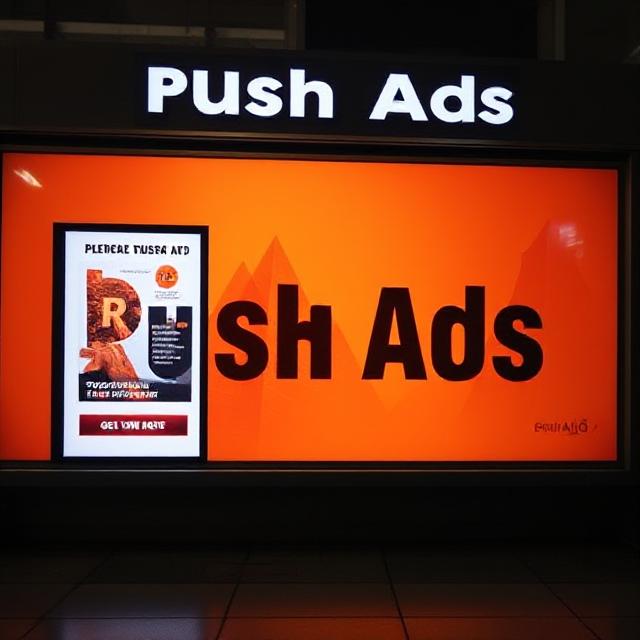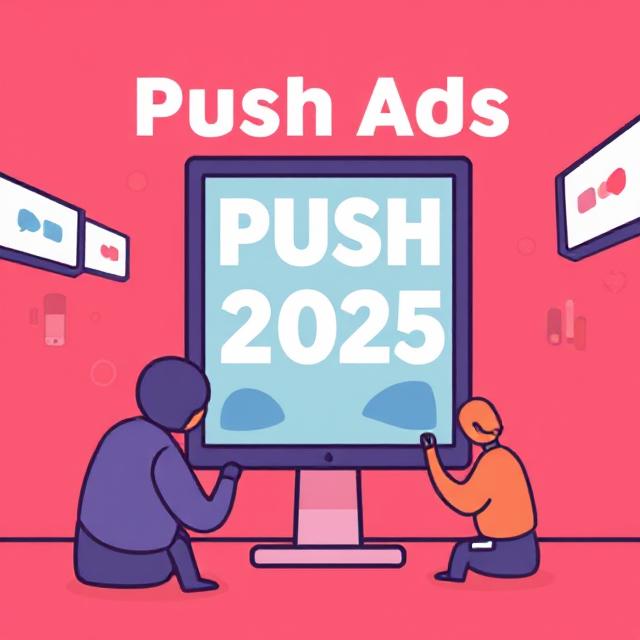Run Push Ads to Increase Conversions and ROI
Push ads exist in several varieties including classic push notifications that appear on mobile and desktops as clickable alerts, in-page push ads resembling native banners that are embedded within a website’s content and app push notifications directly sent from installed apps. They all function differently but still share the same goal which is delivering highly visible, real time messages that drive conversions and spark interaction.
Get startedWhat is Push Ads?
They are a form of paid digital advertising delivered in the style of push notifications on a user’s device screen (a tablet, desktop or mobile), purposely designed to grab attention instantly. They can be used for promotions, app installs, engagements and lead generation.
How Push Ads Looks Like?
They are a form of paid digital advertising delivered in the style of push notifications on a user’s device screen (a tablet, desktop or mobile), purposely designed to grab attention instantly. They can be used for promotions, app installs, engagements and lead generation.


How do Push Ads Work?
A user visits a website or installs an application and is then asked to “Allow Notifications”. Once they opt in or “Allow”, they become part of the publisher’s subscriber list.
The website or app (publishers) partners with an ad network like ProperllerAds or RichAds to monetize its subscriber base.
Advertisers bid for access to the publisher's audience through real-time bidding and upon winning, the ad network proceeds to deliver the push advertising directly to targeted users' devices in real time.
The user receives the push ad whereby they can either click it and be redirected to a signup flow, a landing page or an app install or dismiss it, meaning no engagement.
Every click, conversion and impression that comes from the push ad is then tracked by the ad network and advertisers can therefore analyze performance data to refine their targeting, bids and creatives.
Advantages and Disadvantages of Push Ads
| Advantages | Disadvantages |
|---|---|
|
✅
Push Ads work on both desktops and mobile devices (cross-device reach), giving advertisers flexibility.
|
❌
Over time, users may start ignoring the push ads, especially if they receive too many of them, leading to Ad blindness over time and lower CTRs.
|
|
✅
Most push ad networks run on a CPC basis, allowing advertisers to only pay when users engage. This makes it a budget-friendly option.
|
❌
Push ads are tied to the subscriber list which means less control over where the ads appear, requiring reliance on network targeting filters.
|
|
✅
Push ads offer high visibility and engagement as they appear directly on the user's device screen, commanding attention and sparking curiosity instantly.
|
❌
There is limited storytelling which can make it harder for complex offers like insurance and financial services to communicate full value.
|
|
✅
They are content-based (opt-in user base) which means they are less intrusive, creating a more engaged audience.
|
❌
Users can unsubscribe from notifications at any time shrinking the available audience fast.
|
Push Notifications Versus Push Ads: What is the Difference?
Push notifications are non-paid app or system-generated messages sent to users who have subscribed to updates from a website or installed an application to deliver important reminders, alerts and updates.
Push Ads on the other hand, are paid advertisements sent by an advertiser through sources like ad networks to a broad user base in the format of a push notification to market products and services, aiming to drive clicks, conversions and sales.
What Verticals to Choose for Push Ads?
Start where your network actually has volume and where your offer is allowed. Pops are worldwide; most major networks cover hundreds of countries and all device types.
These are the verticals that consistently pair well with pop traffic.
VPN and Utility
VPNs and utility apps, including Antivirus and Battery Savers, perform well on push ads because they solve immediate, everyday problems for users. Their messaging is simple and urgent and requires less convincing because users are eager for a quick fix to their problems.
E-commerce
E-commerce offers work well with push ads work well because they deliver flash deals and limited-time offers right to the user's screen and record high usage especially during seasonal events like Black Friday.
Mobile Games & Apps
Applications and mobile games scale extremely well with push ads. They allow the use of gamified creatives to catch attention easily and are ideal for locations where gaming is booming and CPI rates are low.
iGaming and Sports
Betting offers are highly time-sensitive by nature and push ads can help deliver real-time reminders that trigger immediate action and high-value conversions.
Sweepstakes/Coupon Offers
Because people love free prizes, coupons and sweepstakes creatives often outperform other verticals in engagement. You can leverage reward and curiosity psychology, hence running push ads that are short and mysterious (perfect for sending messages that spark clicks).
Social & Dating
The curiosity sparked by social and dating offers is irresistible and drives fast engagement. So using push ads in this vertical means instant grabbing of users' attention in dating and social contexts, making CTRs higher than average.
Health & Beauty
Limited beauty product discounts or free trial health offers trigger quick decisions, which fit the push ad format perfectly and can be tailored by market trends allowing you to localize your push ads easily.
Where to Buy Push Ads?
- Self Serve DSPs: Instead of buying a push ad from just one network, you can access many push ads services at once via the self-serve demand side platforms. They allow centralized buying, smarter and large-scale bidding across multiple networks.
- Direct Negotiation with publishers: You can buy Push ads directly from publishers who have access to apps, brokers or websites that own push subscriber lists. They offer more transparency so you know exactly where your ads run and are often higher quality but usually more expensive than networks.
- Push Ad Agency and Networks: They are dedicated push ads company (such as RichAds) that connect advertisers with publishers who monetize via push ads. Besides, they provide huge scale/millions of users worldwide, advanced targeting and relatively low entry cost.

How to Choose a Push Ads Network?
- Look for push notification ad networks that are transparent about where their push subscribers come from (apps, opt-ins, or websites).
- Check if the push ad network allows you to narrow down your audience.The more precise the targeting, the easier it is to avoid budget wasting.
- Review the pricing model used (CPC or CPM) used and the minimum deposit allowed, as some push notification networks will let you start with as little as $50 while others require $100.
- Confirm the supported ad formats and features (push ads review). The best push ads network will offer several formats and features such as in-page push and smart bidding tools to give you the room to test and scale.
How to Set up a High-Converting Push Ads Campaign?
- Define the goal of your campaign clearly. Are you collecting leads, selling a product or driving application installs?
- Pick an offer that matches your end goal and the instant click nature of push ads and make sure the payout is realistic compared to click costs in your chosen GEO.
- Test your ad campaign in specific countries instead of mixing multiple and separate mobile and desktop campaigns, as creatives and CTR differ a lot.
- Create eye catching creatives with short titles, images that are bright, clickable visuals, and keep the description benefit-driven.
- Make use of landing pages or prelanders to warm up the users, explain the benefits and filter out low-quality traffic.
- Start with the recommended bid from the push ad network, use daily caps to control testing spend and slowly scale only the creatives or campaigns showing ROI.
- Track the performance of your push ad campaign with tools like ReTrack and optimize by cutting bad placements, scaling winners and blacklisting low-performing sources.
What are the Best Practices for Creating Effective Push Campaign?
- Personalise your push ads where possible to make your offer feel personal and drive higher CTR.
- Use headlines that are short and attention-grabbing. Keep them no more than 45 characters so they don't get cut off.
- Pair with strong visuals that match your offer and bright colours like red, blue, or green to draw more clicks.
- Create a sense of urgency by adding time-limited phrases like "expires in 3 hours" because push campaigns work well when users feel like they must act quickly.
- Test multiple creatives (A/B testing), cut the weak performing ones and scale those that perform excellently.
- Optimize your landing page for mobile, ensuring it loads faster and looks good on smaller screens since most push ad campaign traffic is mobile.

Push Ads Examples of Creatives for Top Verticals
1. Finance and Insurance
- Icons and Images: Use credit card icons, coins or dollar bills.
- Titles: "Low Rates Available Today" or "Get a $2,000 Loan Approved in 5 Minutes!"
- Description: "No paperwork needed. Instant decision. Click here to apply now."
2. Gaming and Entertainment
- Icon/Image: A slot machine with coins flying out.
- Title: "Your 100 Free Spins Are Waiting!"
- Description: "Win big today! No deposit required."
3. Utilities and Security
- Icon/Image: A red warning triangle over a phone screen containing a virus-detected pop-up.
- Title: "Your Device is at Risk"
- Description: "Remove threats instantly and secure your phone now!"
4. E-commerce
- Icon & Image: Shopping bag with a big red 50% off tag or a countdown clock.
- Title: "Flash Sale Ends Tonight!"
- Description: "Get the latest gadgets at 50% OFF. Limited stock."
How to Target Push Ads?
- Choose countries, regions or cities where you'd like your ad to appear while considering factors such as demand for product or service and competition level of your offer.
- Make use of user behavior and interest (shopping, travel or gambling) to reach people who are most likely to engage with your offer.
- Target by desktop, tablet or mobile based on what works best for your ad. For example, mobile works well for sweepstakes and app installs while desktops convert better for software offers.
- Select carrier and connection type. If your offer converts on Wi-Fi only, then exclude mobile data users and if it is a carrier billing offer, select specific carriers only.